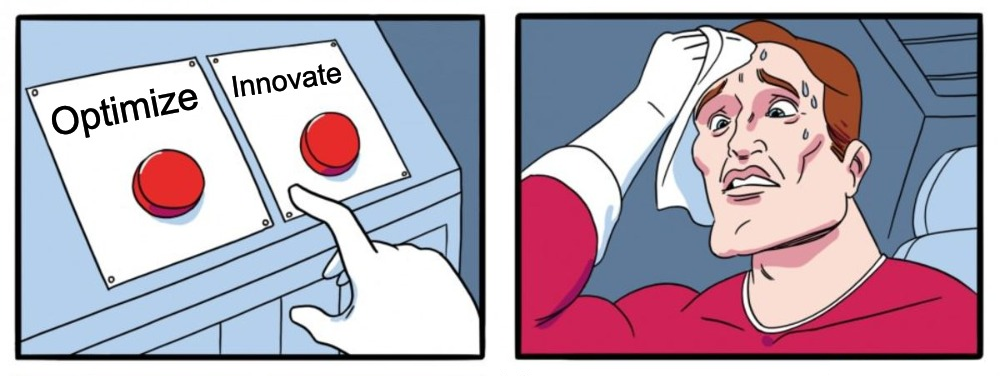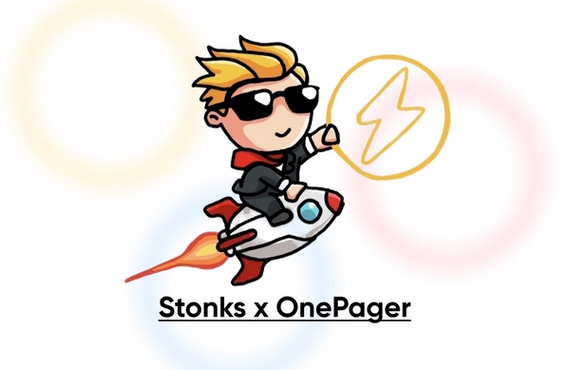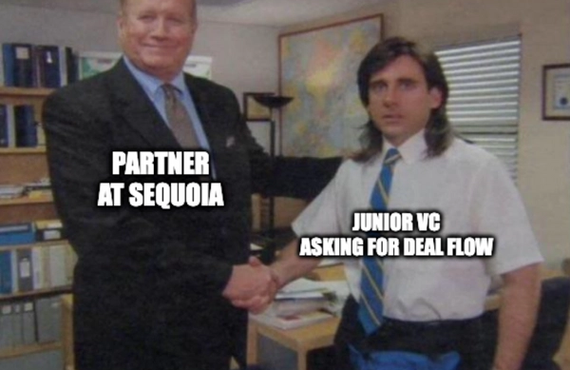Growth Lessons: When to Optimize & When to Innovate

Nic Mahaney
Prev. OnePager Co-Founder
November 18th, 2021

Over the last two decades, strategic growth playbooks have been written from some of the largest success stories out of Silicon Valley. Whether it’s Hotmail’s classic “PS: I love you. Get your free e-mail at Hotmail.” or Dropbox’s referral program, strategies for how to grow your businesses are more available than ever to founders. Within growth, there’s a simple decision to make and it can make or break your efforts:
Is it time to optimize or is it time to innovate?
When approaching growth, it’s important to know your core metrics and build to improve them - that’s essential to data-driven growth. At the same time, the decision or control to know when to build outside of your core metrics can be even more important. How do you know when to do one versus the other? That’s the tough decision to make and skilled operators get it wrong! Let’s take a look at how to approach both:
Optimizing for Growth
Creating optimized processes and workflows within your product are essential to great user experiences. Great user experiences are at the core of product-led growth. Similarly, if there is something you can measure, there is something that you can improve, and (if it’s the right something) you can run your business better. Defining which metrics to monitor and optimize for can be difficult, however.
In that same vein, focusing on optimization at the wrong time can stifle innovation and damage the growth potential of a business. For example, you may want to optimize your signup funnel, so that you increase the percentage of users that get from your landing page to within your application. In simplistic terms, of course this is good - more users are using your product! But upon deeper thought, what was the relative benefit to getting more users through the signup process?
Innovating for Growth
On the other side of optimization is innovation. Innovation is a requirement for any company to create value - even copycat companies tend to innovate in one way or another. In an inverse approach to optimization, innovation traditionally falls outside of following metrics. Innovation requires deep creativity in problem solving, but more importantly, a culture of rewarding creativity and risk-taking.
Risk-reward in startups is a constant balancing act. You have a finite amount of time (money) to invest into various projects, so you can’t be too risky. To scale your startup with efficient capital, however, you’ll need bumps of exponential growth from innovation - which can only happen by investing time (money) into more risky endeavors. Looking at the same example above, instead of optimizing your signup funnel completion %, it may be beneficial to launch an entirely new product or workflow for the users who complete the signup process.
At OnePager, we want to make it easier for companies to make the decision of whether or not to grow through optimization or innovation. We're doing this by innovating the way that you launch your fundraise. After 5,000+ companies used OnePager to help share information during their fundraising efforts, as well as connecting them through our Investor Day Newsletter, we had thousands of metrics that pointed us towards possible optimization focuses. While we will build on these, our core focus is to innovate within the core product of OnePager to help companies launch their raise in a similar fashion to what Product Hunt has done for new product launches.
To learn more about deciding between optimization or innovation, listen to Harry Stebbings’ podcast with Thrive Capital’s Kareem Zaki. Also, read Innovation vs Optimization by Mike Volpi of Index Ventures


